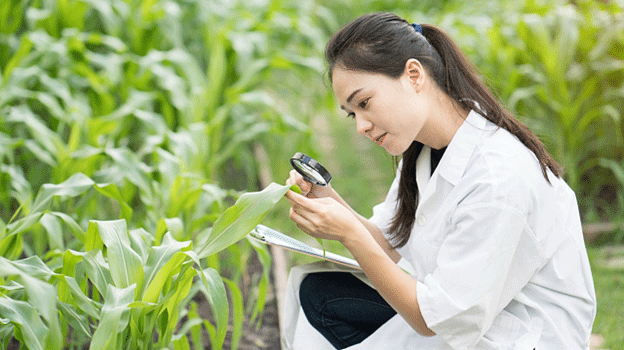Chinese scientists have developed a gene-editing technique to reduce corn plant height, enabling the cultivation of compact, high-density varieties with enhanced lodging resistance. This advancement holds significant promise for increasing corn yields and ensuring food security.
In a significant stride toward bolstering global food security, Chinese researchers have unveiled a gene-editing method that reduces corn plant height, facilitating the development of compact, high-density varieties resistant to lodging. This breakthrough addresses longstanding challenges in corn cultivation, where increasing planting density is a key strategy for boosting yields, yet efforts have been constrained by limited genetic resources.
The research, conducted by the Biotechnology Research Institute of the Chinese Academy of Agricultural Sciences (CAAS) in collaboration with Anhui Agricultural University and South China Agricultural University, focused on modifying the Br2 gene through targeted gene editing. By designing a knockout vector for Br2, the team identified seven transgenic lines with distinct genetic mutations in inbred corn varieties. Hybridization experiments confirmed that all 28 hybrid offspring resulting from crosses with elite inbred lines exhibited dwarf characteristics. To accelerate breeding, the scientists introduced a haploid inducer-mediated genome editing system, allowing for the rapid transformation of edited haploid plants into stable double-haploid lines within two generations. Trials with three elite inbred lines showed significant reductions in plant height. “This method enables precise and efficient modification of plant height across diverse genetic backgrounds,” stated Wang Baobao, a researcher at CAAS. The findings were published in the Plant Biotechnology Journal.
This development aligns with China’s broader agricultural strategy to enhance crop yields and ensure food security. In February 2025, the Ministry of Agriculture and Rural Affairs released guidelines to promote biotechnological advancements from 2024 to 2028, focusing on gene-editing tools and developing new varieties of wheat, corn, soybeans, and rapeseed. The initiative aims to achieve “independent and controllable” seed sources for key crops, cultivating high-yield, multi-resistant varieties.
Moreover, in December 2024, China approved five gene-edited crop varieties and 12 genetically modified (GM) types of soybean, corn, and cotton. This move is part of efforts to boost high-yield crops, reduce reliance on imports, and ensure food security. The approved gene-edited crops include two soybean varieties and one each of wheat, corn, and rice.
The successful application of gene-editing technology to develop shorter, high-density corn varieties marks a pivotal advancement in agricultural science. This innovation not only enhances yield potential but also contributes to structural resilience against lodging. As China continues to invest in biotechnological research and development, such breakthroughs are poised to play a crucial role in meeting the growing global food demand and achieving sustainable agricultural practices.
Error




